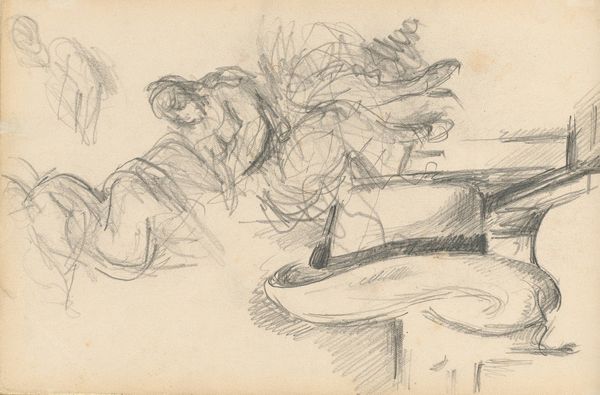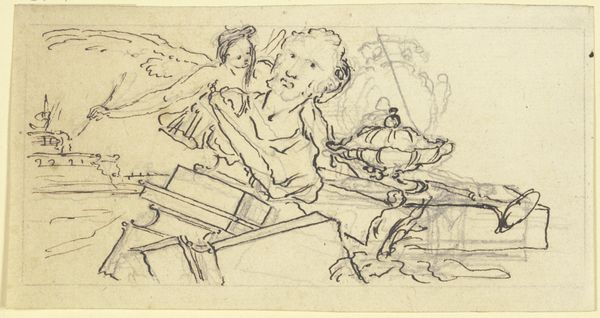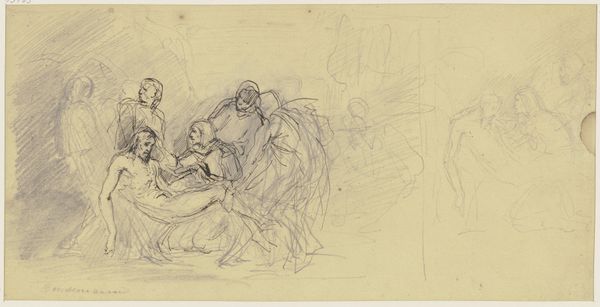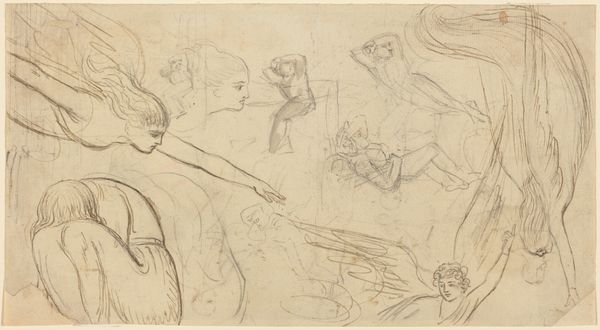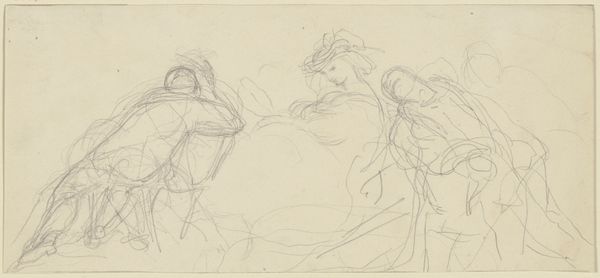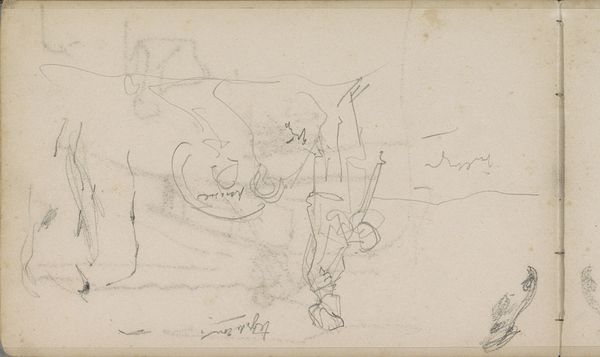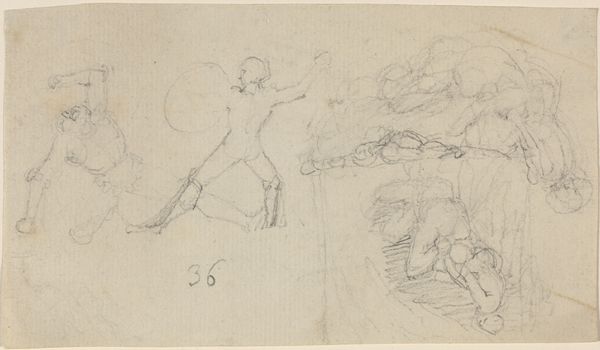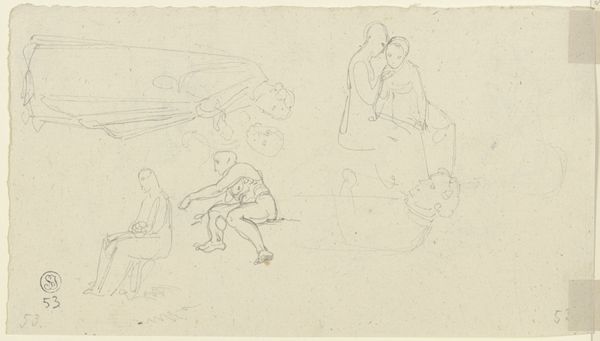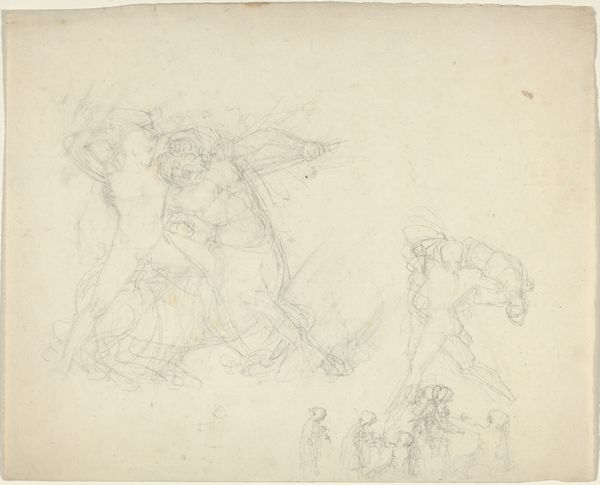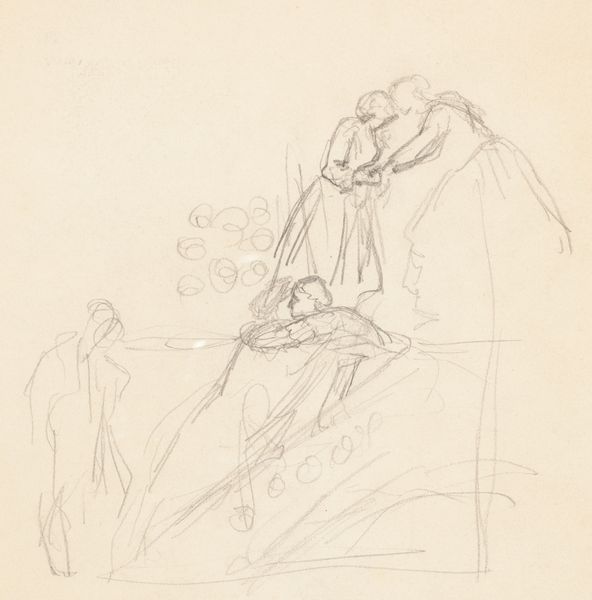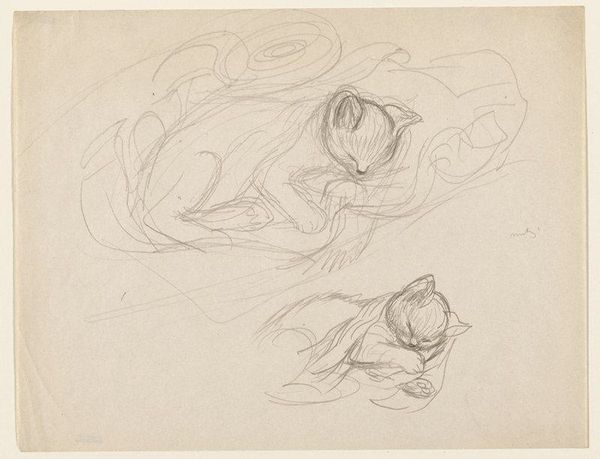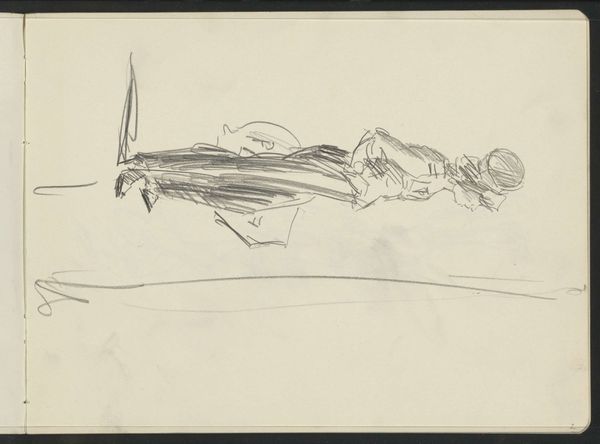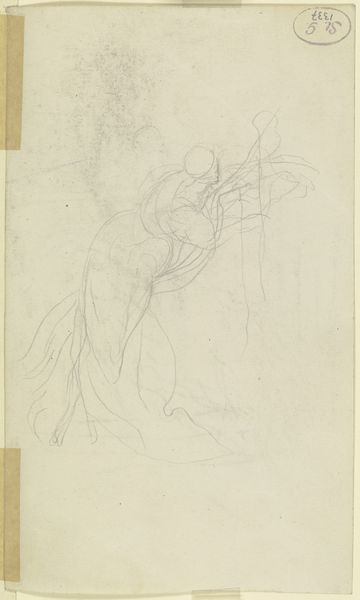
Allegorisk fremstilling af Vestindisk handel? Merkur liggende på en vippe og f.o. Rigdommen 1743 - 1809
0:00
0:00
drawing, ink, pen
#
drawing
#
ink drawing
#
allegory
#
pen sketch
#
figuration
#
ink
#
line
#
pen
#
history-painting
Dimensions: 189 mm (height) x 276 mm (width) (bladmaal)
Curator: This pen and ink drawing before us is titled "Allegorisk fremstilling af Vestindisk handel? Merkur liggende på en vippe og f.o. Rigdommen", which translates to “Allegorical Representation of West Indian Trade? Mercury Lying on a See-saw and e.g. Wealth." It’s attributed to Nicolai Abildgaard and was created sometime between 1743 and 1809. What strikes you about it? Editor: Chaos. A chaotic sketch! The figures seem suspended, almost violently so, in mid-air. You've got this dramatic tension created by the diagonal lines and implied movement. It's…unsettling. Curator: Indeed. Abildgaard, a leading figure of Danish Neoclassicism, often used allegory to comment on contemporary issues. This sketch likely addresses the West Indian trade and its precarious relationship with wealth. The sketch feels like a condemnation, or at least, a critique. Editor: Look at the rough, almost frantic linework. This isn't some polished, finished piece meant for display. It’s a working drawing, we can see the artist grappling with these ideas through materiality, with each stroke mapping not just form, but potentially a thought. I’m really struck by how direct the method feels. Curator: It gives us a glimpse into Abildgaard's process. Mercury, the god of commerce, balanced precariously – could be an acknowledgement of the volatility of mercantile ventures. The figure pointing could be an authority, perhaps. We get hints of moral judgements regarding this pursuit of wealth through colonial trade. Editor: And what wealth is made from: exploitation, dispossession. The materials speak quietly about production – ink, cheap paper perhaps readily available from the trades being critiqued; the hurried gestures indicative of anxiety that these ventures inspire.. There is almost no shading. Very minimal use of tone: it feels almost deliberately utilitarian. Curator: Precisely. The allegory isn’t simply an academic exercise but embedded in complex socio-economic systems. The lack of refinement forces a rawness in how this trade is laid bare. Editor: Thinking about what kind of studio setting Abildgaard would have needed to conceptualize an image such as this – the sheer intellectual labor combined with the actual pen-on-paper physical action to give the social impact the visual language and tangibility is simply incredible. It reminds you that every artwork stems from so many interweaving dependencies. Curator: A powerful point. Well, examining this sketch really reminds us that artworks, even seemingly simple ones, can offer nuanced insights into the history and materiality that shaped their creation and continues to influence how we perceive the world around us. Editor: It is that, coupled with a frank view on labour practices and materials within the Neoclassical timeframe that will stay with me, the piece shows how history painting must have incorporated that in the studio.
Comments
No comments
Be the first to comment and join the conversation on the ultimate creative platform.
